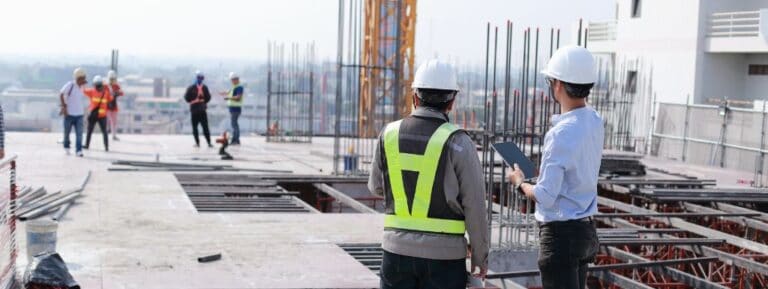By Michael Finch and Luke Hyland
This article explores how the Building & Construction Industry Security of Payment Act 1999 (NSW) (“the Act”) can be used by subcontractors to freeze the flow of money from the principal to the contractor, in circumstances where there is a dispute over a subcontractor’s payment claim. Specifically, we are discussing how and when a subcontractor can make a payment withholding request to secure that disputed money.
The building and construction industry is widely regarded as being heavily reliant on cashflow. It is a well-known truth that if a subcontractor isn’t paid on time, that delay in pay can result in further delays on other projects just on the basis that the subcontractor doesn’t have the cashflow to buy materials and hire labour for the next job. For the is reason, the object of the Act and the security for payments regime is to:
… ensure that any person who undertakes to carry out construction work … under a construction contract is entitled to receive, and is able to recover, progress payments in relation to the carrying out of that work …
So how does a subcontractor ensure they are paid on time? The answer is seemingly simple; through the proper administration of contracts, notices and payment claims a subcontractor will be afforded the protections of the Act, which include the payment withholding request. Building on this, the process for effectively securing payments is set out below.
The Process
1) Have a compliant written contract between you and the contractor
2) Carry out the work as agreed for the billing period (usually monthly)
3) Serve a valid payment claim in accordance with the Act
If the subcontractor has complied with the above, they are likely entitled to issue a payment claim after the relevant reference date (the date payment claims can be issued under the contract).
There are three requirements that a payment claim must detail, including:
i) The construction work completed;
ii) The amount claimed by the claimant; and
iii) That the payment claim is made in accordance with the Act.
If the payment claim is accepted, then payment should be forthcoming. If the payment claim isn’t disputed but no payment is made, there may also be a presumption that the payment claim is accepted – this comes down to a strict review of the payment notices and application of the Act.
4) If the payment claim is disputed, the contractor needs to issue a payment schedule
Where the progress claim is disputed, the contractor will need to issue a payment schedule listing the reasons why payment shouldn’t be made in full. The subcontractor can then determine if they agree to the proposed reductions or instead dispute the payment schedule.
5) If the Subcontractor doesn’t agree with the payment schedule, they can lodge an adjudication application
An adjudication application is a formal process made to an adjudicator setting out the reasons for dispute and seeking an expedited determination of the payment dispute. Whilst this application is meant to be a ‘fast tracked’ approach to determining the dispute, it is important that the application be made with strict adherence to the Act and be supported with strong evidence of the claim.
At a high level, the requirements for an adjudication application in NSW include that it:
i) is made in writing;
ii) is made to an authorised nominating authority;
iii) is lodged within:
a) 10 business days of receiving a payment schedule if in relation to an amount dispute;
b) 20 business days if in relation to a failure to pay in accordance with a payment schedule; or
c) 10 business days after the 5-day period of the due date of a payment schedule;
iv) is served on the contractor at same time as lodging;
v) identifies the payment claim and schedule;
vi) is accompanied by the relevant application fee;
vii) include all information in support of the claim; and
viii) include a copy of the contract.
6) Prepare and serve Payment Withholding Request
Once the adjudication application is in motion, the subcontractor can then serve the principal contractor with a Payment Withholding Request. The request should be accompanied with a statement in the form of a statutory declaration, stating that the subcontractor believes the money is owed by the contractor.
Once the principal contractor is served with the payment withholding request, it is their responsibility to retain (and in essence “freeze”) the funds that were to be directed to the contractor until such time that the adjudication application is determined.
7) Await outcome of Adjudication
8) Serve the Principal Contractor with the outcome of the Adjudication
Once the adjudication is concluded, the Adjudicator will give the subcontractor and the contractor their reasons for determination, which sets out the outcome. The subcontractor should serve the principal contractor with those reasons within 5 business days of receiving the reasons for decision. This needs to be done whether or not the subcontractor wins the adjudication. It should also be noted that there are other reporting obligations that the subcontractor has to the principal contractor in the event that the adjudication application is withdrawn – the underlying theme is that the principal must be kept informed of how the adjudication concludes in a timely manner.
Key takeaways
Whilst the process appears to be based out of conflict, it is strong a protection for subcontractors. This is especially the useful where the subcontractor can see that the principal is paying the contractor but for whatever reason, that contractor is not paying the subcontractor.
If you need assistance in utilizing the security for payments legislation, or assistance with an adjudication, our construction and litigation lawyers are on hand and equipped with the skills to get you the best result.
Call our Sydney Lawyers on 1300 770 233 or email at [email protected].
The blog published by Rostron Carlyle Rojas is intended as general information only and is no legal advice on any subject matter. By viewing the blog posts, the reader understands there is no solicitor-client relationship between the reader and the blog published. The blog should not be used as a substitute for legal advice from a legal practitioner, and readers are urged to consult RCR on any legal queries concerning a specific situation.



